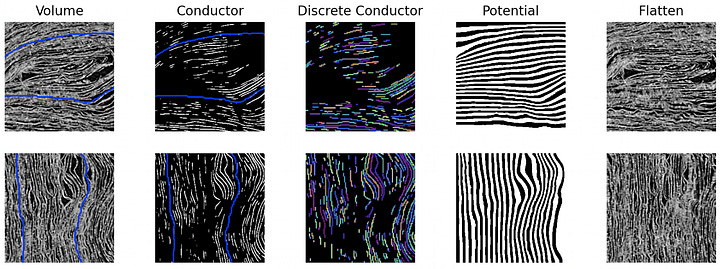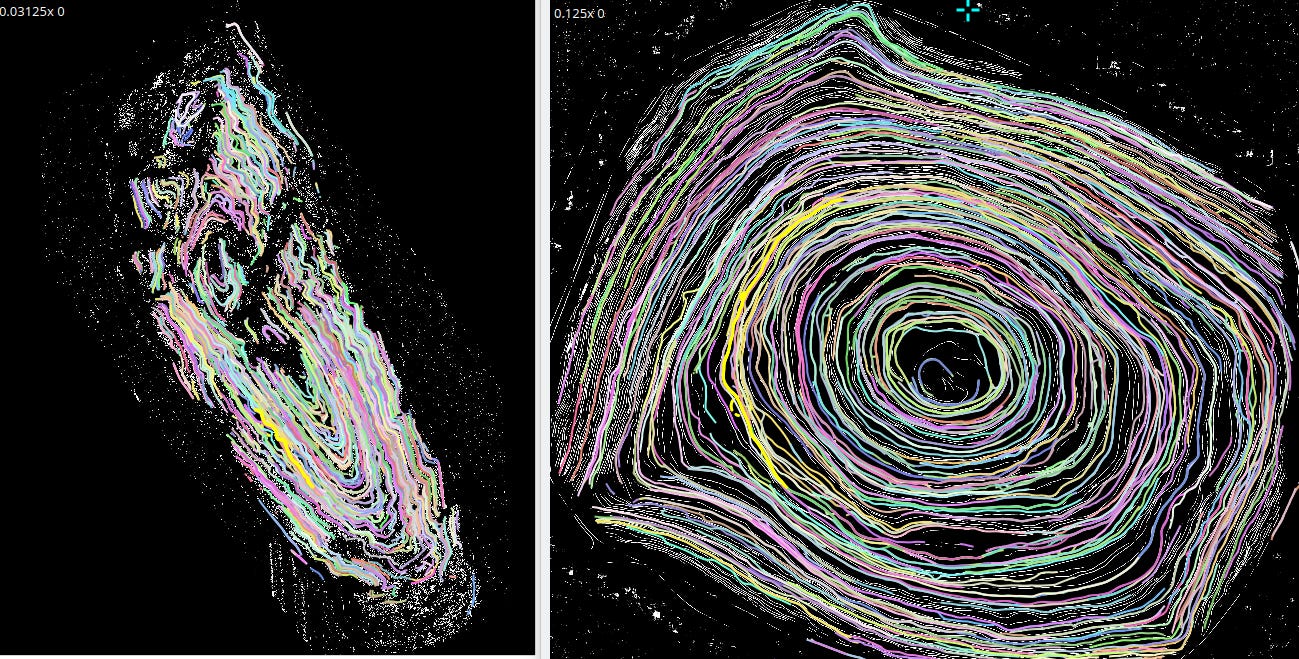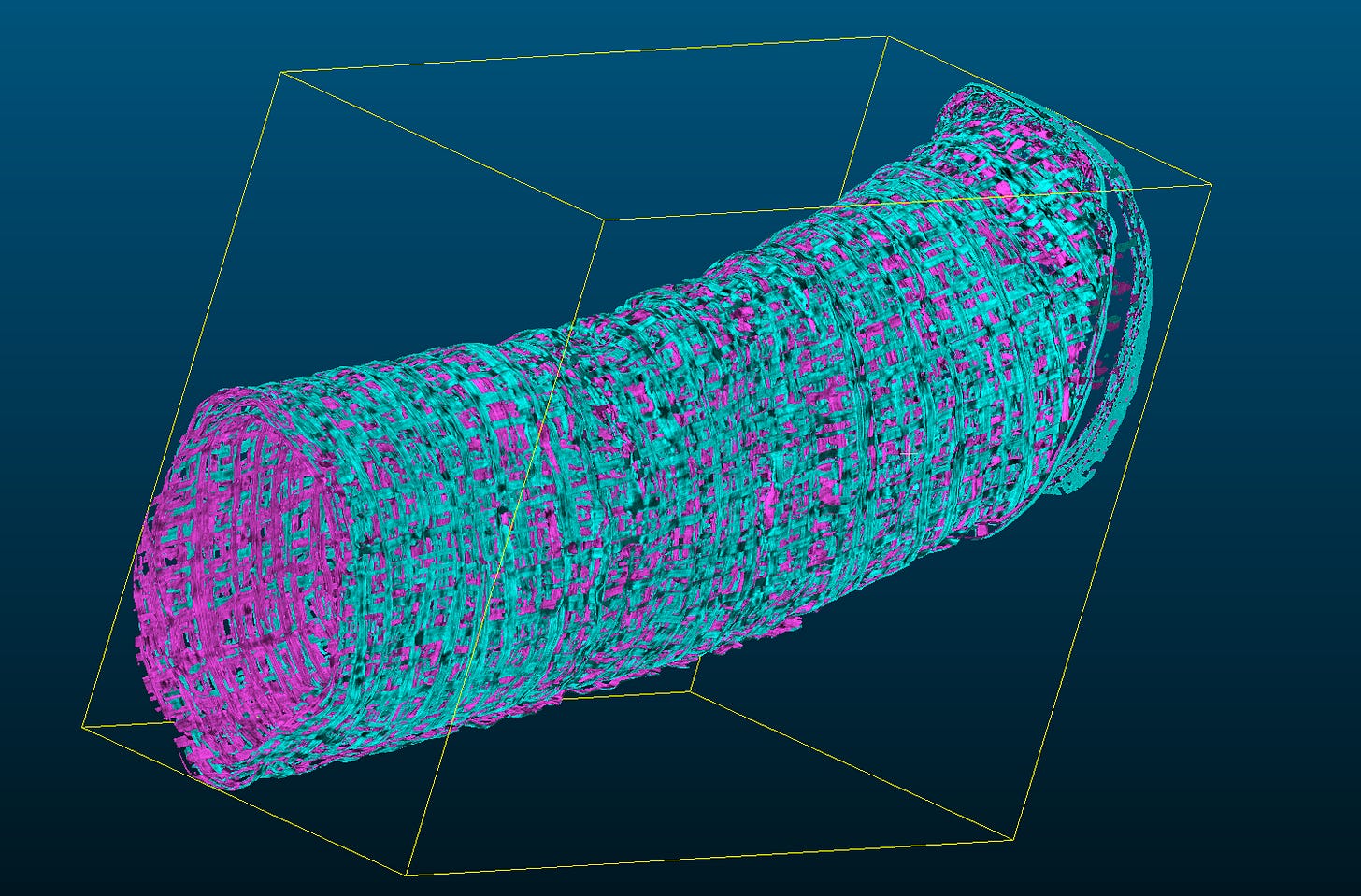Vesuvius Challenge Progress Prizes: November Edition
$29,000 in community contributions
For part one of a multi-part prize series, we’re shining light on technical contributions made by our community during the month of November!
Progress Prizes are for open-ended contributions across the broad virtual unwrapping pipeline, but they often center around a theme. We love this, as it represents a clear signpost towards the frontier! Recently, many contributions have focused on extracting useful structure out of raw image data, using that structure to assemble virtual papyrus sheets, and building performant tools that scale these approaches to more scrolls.
Now, for the prizes!
2 x $10,000 (Denarius)
Hendrik Schilling / @waldkauz has been attacking the segmentation problem from multiple angles! These contributions together have earned a Denarius award for significantly advancing our segmentation toolkit:
A suite of tools for batch generating patches that fit to the scroll surface:
Additional tools in Volume Cartographer to visualize and process these patches, laying the groundwork to stitch them together into large, contiguous sheets!
Forrest McDonald / @verditelabs made significant additions to what is now vesuvius-c, a single-header C library for interacting with Vesuvius Challenge data. The library can stream scroll data in various formats from the data server, perform image operations, write to disk, and more! It’s already been used by other community members to build other tools, and we’d love to see even more of this.
2 x $2,500 (Sestertius)
Yao Hsiao / @Yao Hsiao and Dalufishe / @Dalufish demonstrated a new technique for flattening 3D scroll images into more orderly visualizations by simulating an electric potential field and fitting it to the data (Discord discussion). We can imagine this being used not only as a visualization tool but as a building block in a segmentation approach!


Handmade concept drawings and real experiment results using the electric potential field method. Sean Johnson / @sean (bruniss) and Hendrik Schilling / @waldkauz continued adding to their prolific data contributions. This time around: surface prediction volumes for Scroll 5, Scroll 5 segment patches (pictured), and more granular prediction volumes for Scroll 1.
4 x $1,000 (Papyrus)
Marcel Roth made phalanx, a Python-based command line tool for easier downloads from the Vesuvius Challenge data server. It supports full scrolls and fragments, and either complete or partial data downloads.

The epic phalanx banner image. James Darby / @james darby made a 2D → 3D labeling tool that allows one to annotate in a flattened 2D segment space (with depth!) and then to transfer those annotations back into the 3D volume (Discord discussion). Example use cases include surface annotation, fiber annotation, and ink annotation!
Chuck / @khartes_chuck contributed a zarr_to_ome script (documentation), to take single-resolution Zarr data volumes and convert them to the multi-resolution OME_Zarr format. It also allows for windowing and shifting the data, converting from 16-bit to 8-bit, changing the chunk size, and changing the compression.
Elian Rafael Dal Prá / @err and Sean Johnson / @sean (bruniss) manually segmented and uploaded a large region in the area of Scroll 1 where we expect there might be a scroll title hiding. Though we still haven’t been able to identify a title, it is helpful to continue exploring this region!
Thank you to all of our amazing community members who share our vision of recovering these texts! We are grateful to get to see your inspiring ideas and the momentum you are building together. These texts have hidden for many years now, but their time is running short.







